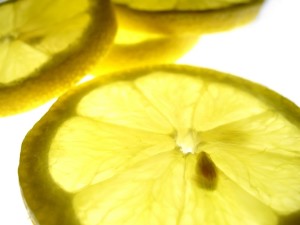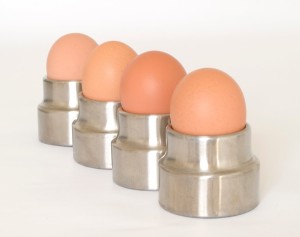
by theglamscientist | | hair, hair care, hair conditioning, hair damage, hair elasticity, healthy hair |

Elasticity is a very important factor in assessing the strength of hair. The elasticity of the hair is an indicator of what styles and/or processes your hair can withstand. When hair has low elasticity, it will not hold a curl well (thermal or wet styled) and it is more prone to damage caused by styling and chemical treatments. Basically, hair with low elasticity is weak and must be handled with care.
Chemical treatments including relaxers, permanent wave, color and even keratin should be preceded by an elasticity strand test to ensure minimal (ideally zero) breakage occurs. But you should also consider performing an elasticity test before going to wacky with the hooded dryer, blow dryer, round brush and flat iron because this requires good elasticity, too. One way to test your hair’s elasticity is to take a [full length] strand of hair from your comb or brush. Hold the strand with the index finger and thumb of both hands about 2 inches apart. Quickly and firmly pull the strand of hair. If the strand snaps, it has low elasticity; If it remains in tack, it has good elasticity.
Another strand test that is equally as fun is what I call the “ribbon curl” test. Hold a strand of hair between the index finger and thumb of one hand. With the index finger and thumb of the opposite hand, use your thumb nail to firmly run along the length of the strand so that it curls. — This is similar to curling a ribbon with scissors. — Now stretch the curl until the strand is straight then let it go. If the strand returns to the original curl pattern, it has good elasticity. If it returns to at least half the original curl, it has moderate elasticity. If it stays straight, your hair is in bad shape :(.
Many factors affect the elasticity of the hair. Excessive heat styling, combing/brushing when the hair is wet and chemical treatments can all have a devastating effect on your hair’s level of elasticity. If after performing the strand test you find that your hair has low elasticity, avoid all of the above styling faux pas. Hair elasticity can be improved by giving your hair what it lacks… PROTEIN! Hair is 100% protein (keratin). Hair with low elasticity has weaker protein bonds than that of good elasticity. Nevertheless protein treatments are a good idea for everyone sooooo… Run, run, run to your nearest beauty supply to purchase a deep conditioning protein treatment.
Here’s to the Glam Life!

by theglamscientist | | acidic, alkaline, basic, conditioner, hair, hair care, healthy hair, pH balance, pH test, shampoo |

I started a new project in the lab last week that inspired this blog post. While developing new products, a lot of “tests” are done to make sure all is as it should be. One test that is a constant for all (most) products is pH. pH indicates the level of acidity (or basicity pOH) of a substance. pH is important in cosmetic product development because skin and hair have pH too. The products you apply to your skin and hair should work with your body chemistry, not against it.
The pH scale starts at 0 and caps off at 14 with 0 being highly acidic, 14 being highly basic and 7 being neutral (7 is the pH of distilled water). Either end of the scale results in severe chemical burns. The pH of normal, healthy hair ranges from 4.5 to 5.5 (mildly acidic). Similarly, the pH of basic hair care products range between 4 and 6. Color treated and/or damaged hair tends to have a more basic (alkaline) pH. In a basic environment, the cuticle layer of the hair stands out and appears frayed or split. In order to treat damaged hair, a hair product must be more acidic to smooth the cuticle layer resulting in less tangles and higher shine. The process of treating alkaline hair with acidic products is what is meant by “pH balanced”. Knowing that damaged hair has a higher pH indicates that a normal pH hair care product may not be very effective in treating damaged hair.
Putting it all together
I’m sure you’ve noticed that hair care products are marketed for certain hair types ie dry/damaged/split ends, normal, oily, etc. While these products will often use different ingredients to garner results, one key factor is pH. A formulator will know if the product has a chance of working just by taking the pH of the final formula. I have rarely seen the pH of a hair care product disclosed on the packaging. So as the consumer, you need to get a little crafty. Before trying a product, I suggest you pick up your own supply of pH (litmus) paper and do a quick test. The ideal pH would be 4 or 4.5 to work well on all hair types. No matter how damaged your hair may appear, you never want a product with a pH lower than 3– and even that’s pushing it. **Keep in mind, the pH test only works for products/treatments that contain water.
You’re now just a pH test away from gorgeous, healthy hair 😉 Here’s to the Glam Life!

by theglamscientist | | Amino acids, cosmeceuticals, hair cycle, hair growth, health food, healthy hair, proteins |

I’m going to tell you ladies a secret… are you ready? Here it goes: One night while I was asleep, my son decided to rest his bottle in my hair. I woke up with a mane full of formula! I know what you’re thinking… “That is so gross!” “I hope you washed your hair immediately” The answers– “Not really all that gross.” “I washed my hair, eventually.”
Allow me to explain. My son suffers from multiple food allergies– milk and soy included. So instead of drinking the typical milk based formula, cow’s milk or soy milk, he drinks a hypoallergenic formula made solely of amino acids. It comes in powder form and I mix it with water. In essence, I had a fantastic conditioning treatment in my hair! Plus it’s tropical flavor, so it smells good too. If you’ll recall from your high school science classes, amino acids are the building blocks of proteins… and hair is made of a fibrous protein better known as keratin. Put simply, amino acids are hair food.
Amino acids combine to form proteins that will strengthen the hair and possibly help promote hair growth. Keep in mind, everyone’s hair growth cycle is different. You can’t grow waist length hair if that’s not in your DNA. See previous post Long, Luxurious Hair: The Science. Fortunately, you don’t have to have a formula incident to reap the benefits of amino acids and/or proteins. The claim to fame for those mayonnaise and egg kitchen conditioning treatments is the fact that they are rich in proteins, thus also rich in amino acids.
These days, cosmeceuticals are growing in popularity. They are no more than a collection of vitamins, minerals, etc that can be taken in pill form or have been packed into special beauty drinks. I’m all for cosmeceuticals– anything to keep it pretty. Just remember that you can add the same vitamins, minerals, essential fatty acids, etc to your diet just by incorporating the right foods. Amino acids are included in the list of beauty must haves that you can get find in your foods. Out of 22 amino acids, our bodies can produce 13. The remaining 9 need to be supplemented and are referred to as essential amino acids. Foods such as milk and meat contain all 9 essential amino acids. Remember the tagline for milk? “–it does a body good.” Add to that “–it gives you strong, healthy, pretty hair.” What woman doesn’t want great hair?! Other foods that contain essential amino acids are nuts, beans, soy, peas, rice, wheat and other grains. Alone these sources don’t contain all the essential amino acids, but combined you will get all that you need.
The next time you’re in the beauty supply, you can be confident in picking up products with amino acids listed in the ingredients. Until then, make sure your diet is giving you all the beauty food you need.
Here’s to the Glam Life!






